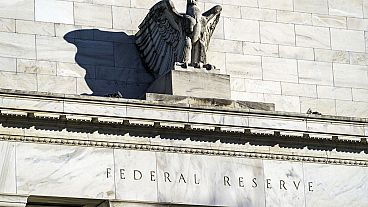This week is packed with critical economic data and events, shaping global market sentiment. Three major central banks are scheduled to hold policy meetings and make decisions on their interest rates.
It will be a crucial week as three major central banks, including the Bank of England (BoE), the Federal Reserve, and the Bank of Japan (BoJ) are set to decide on their interest rates.
While market participants largely expect global central banks to be on course for rate cuts, the BoJ is an exception and is anticipated to continue tightening its monetary policy.
In Europe, the eurozone is set to release its final inflation for August. Following last week’s ECB rate cut, this data will be pivotal for market sentiment.
Europe
The eurozone’s final Consumer Price Index (CPI) for August is a key focus for the region. According to the flash estimate, inflation cooled to 2.2% year on year, marking the slowest increase since July 2021.
However, core inflation remains stubborn at 2.8%. The final data is expected to align with the flash figures, further confirming a cooling inflation trajectory.
Additionally, the German ZEW Economic Sentiment Index for September will offer insights into the country’s economic health.
In August, the index fell sharply to a seven-month low of 25.8, highlighting the continued deterioration of Europe’s largest economy.
Recent political uncertainty is also contributing to the gloomy outlook. Consensus suggests that economic sentiment will further decline to 18.6 in September.
In the UK, the Bank of England’s (BoE) rate decision will be in the spotlight, with expectations that it will keep its policy rate unchanged at 5% in the upcoming meeting.
In August, the bank delivered its first rate cut since 2020 amid cooling inflation. However, consumer prices rose again to 2.2% year on year in July, after easing to 2% in the previous two months.
High service prices and wage growth continue to pose risks to a resurgence in inflation.
The UK is also set to release its CPI for August, with consensus suggesting that inflation will remain steady at 2.2%. Despite this, flat monthly economic growth over the past two months may prompt the Bank to consider another cut in November.
The US
It is almost certain that the Federal Reserve will begin cutting rates at the upcoming meeting. However, last week’s higher-than-expected core inflation has reduced the likelihood of a 0.5% rate cut.
According to the CME FedWatch Tool, the probability of a quarter-point cut has risen to 57%, up from 50% in August. Some analysts expect the Fed to front-load its rate cuts, as its decision has lagged behind other central banks.
However, a more hawkish-than-expected tone could weigh on market sentiment once again.
US retail sales data for August are also in the spotlight for investors, as it provides insight into the trajectory of consumer spending.
In July, retail sales surged by 1% month on month, following a 0.2% decline in the previous month, marking the biggest increase since January 2023.
This data indicated that US household consumption remained strong, adding upward pressure to inflation. The consensus forecast expects the index to decline by 0.1% in August, which would be viewed as a positive trend for the economy.
Asia-Pacific
While other major Western central banks are cutting interest rates, the Bank of Japan (BoJ) is raising rates as part of its efforts to normalise monetary policy. The bank ended its negative interest rate policy in March and raised its policy rate for the second time this year in July.
It has also reduced its government bond purchases as part of its tightening measures. However, analysts do not expect the BoJ to hike rates again this month, as it is likely to take a cautious approach to avoid negatively affecting the economy.
Nevertheless, Japan’s inflation remained steady at 2.8% for the third consecutive month in July, prompting the BoJ to continue its monetary tightening to strengthen the yen.
China is also set to decide on its 1-year and 5-year loan prime rates this week with no changes expected.
In July, the central bank unexpectedly cut two benchmark rates by 10 basis points. Additionally, it lowered the seven-day repo rate by the same margin, from 1.8% to 1.7%.
However, the Chinese government is implementing stimulus measures gradually to avoid creating economic bubbles.
The recent policy encouraging state-owned entities to purchase commercial properties from developers is expected to improve conditions in its troubled housing market.















